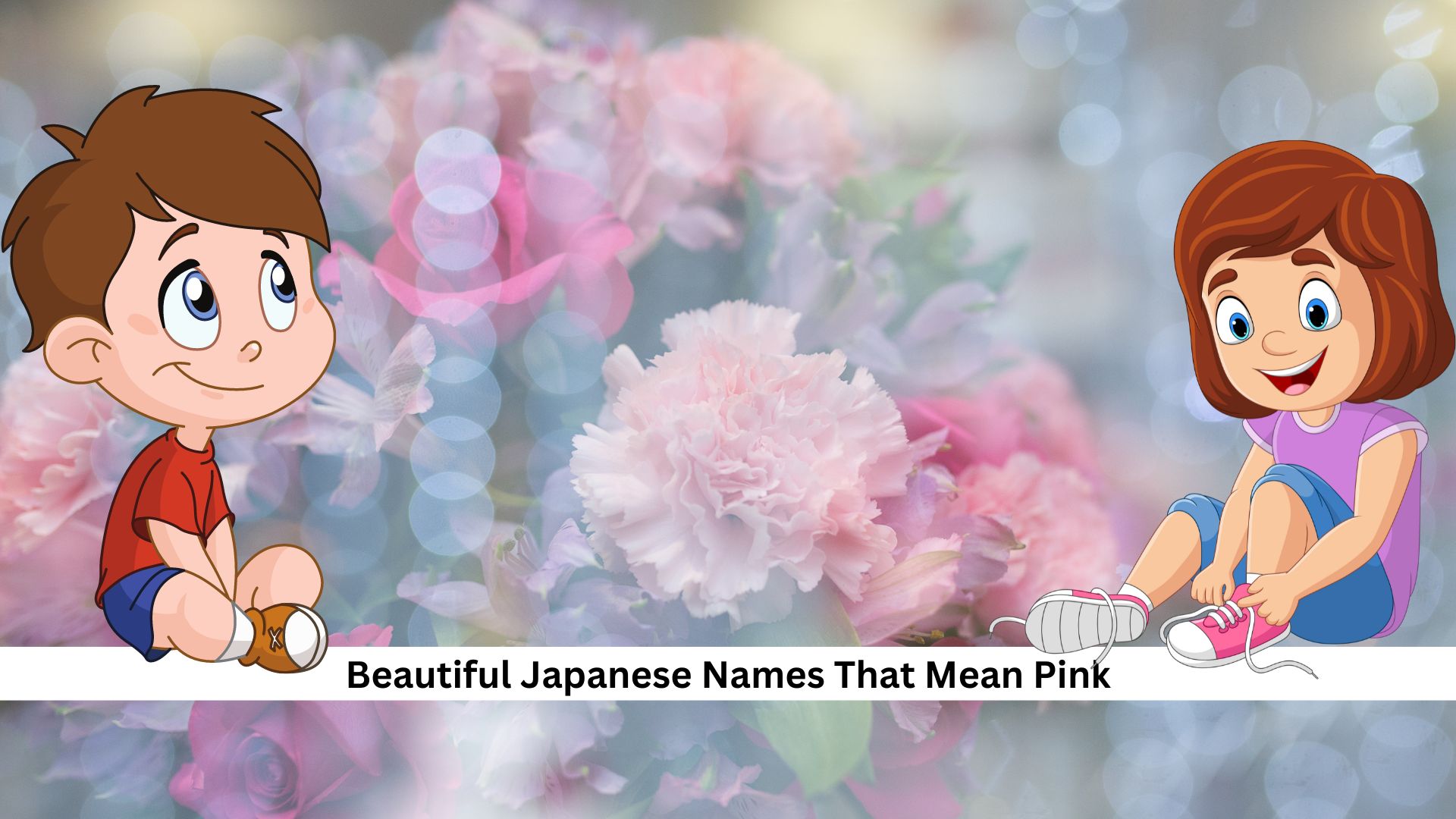Exploring the 110+ Japanese names that mean ‘pink’ shows us how deeply language and culture connect in Japan. Here, pink isn’t just a color. It’s packed with meaning, often linked to the beauty of cherry blossoms and sunsets. These stories are not just about beauty; they reflect key values and beliefs important in Japanese culture. By looking at these names, we see how a simple color like pink can carry deep meanings. Let’s dive deeper into these names and see what they tell us about Japanese culture.
Popular Japanese Girl Names That Mean Pink
Let’s dive into some popular Japanese girl names inspired by the color pink, a color with deep cultural significance in Japan. Take Sakura, for example—it means cherry blossom. It’s a name that captures both the beauty and the fleeting nature of life. Lastly, Ayame, or iris, hints at a subtler pink seen in some iris petals. These names do more than just sound beautiful—they connect to nature and the changing seasons, reflecting how important pink is in Japanese culture.
- Momoka (桃花) – Meaning “peach flower,” evoking the delicate pink of peach blossoms.
- Sakura (桜) – Translates to “cherry blossom,” the quintessential pink flower of Japan.
- Bara (薔薇) – Meaning “rose,” commonly associated with romantic pink hues.
- Momo (桃) – “Peach,” referring to the soft pink color of a peach’s skin.
- Ayame (菖蒲) – Iris, which can sometimes bloom in beautiful shades of pink, symbolizing good news.
- Ichigo (苺) – “Strawberry,” famous for its bright pink color, symbolizing sweetness and charm.
- Kohana (小花) – “Little flower,” often envisioned in shades of pink, representing small, delicate beauty.
- Sakurako (桜子) – “Cherry blossom child,” embodying the beauty and transience of pink cherry blossoms.
- Nadeshiko (撫子) – Named after the pink Dianthus flower, symbolizing natural beauty and femininity.
- Sumire (菫) – “Violet,” which can include varieties in soft pink, symbolizing modesty and fidelity.
- Hanako (花子) – “Flower child,” often associated with the vibrant and varied pinks in flowers.
- Yuriko (百合子) – “Lily child,” connecting to lilies that bloom in gentle pink, symbolizing purity and renewal.
- Momiji (紅葉) – “Red leaves,” but in certain contexts can refer to leaves that turn a soft pink in autumn.
- Ran (蘭) – Orchid, which often blooms in a striking pink, symbolizing love and beauty.
- Sakurano (桜野) – “Field of cherry blossoms,” painting a picture of widespread pink beauty.
- Momojiro (桃尻) – “Peach bottom,” colloquially used for the blush pink of a peach, representing youth and health.
- Fujiko (藤子) – “Wisteria child,” linking to the rare pink wisteria, symbolizing grace and elegance.
- Akari (明り) – “Brightness,” often associated with the bright and cheerful nature of pink.
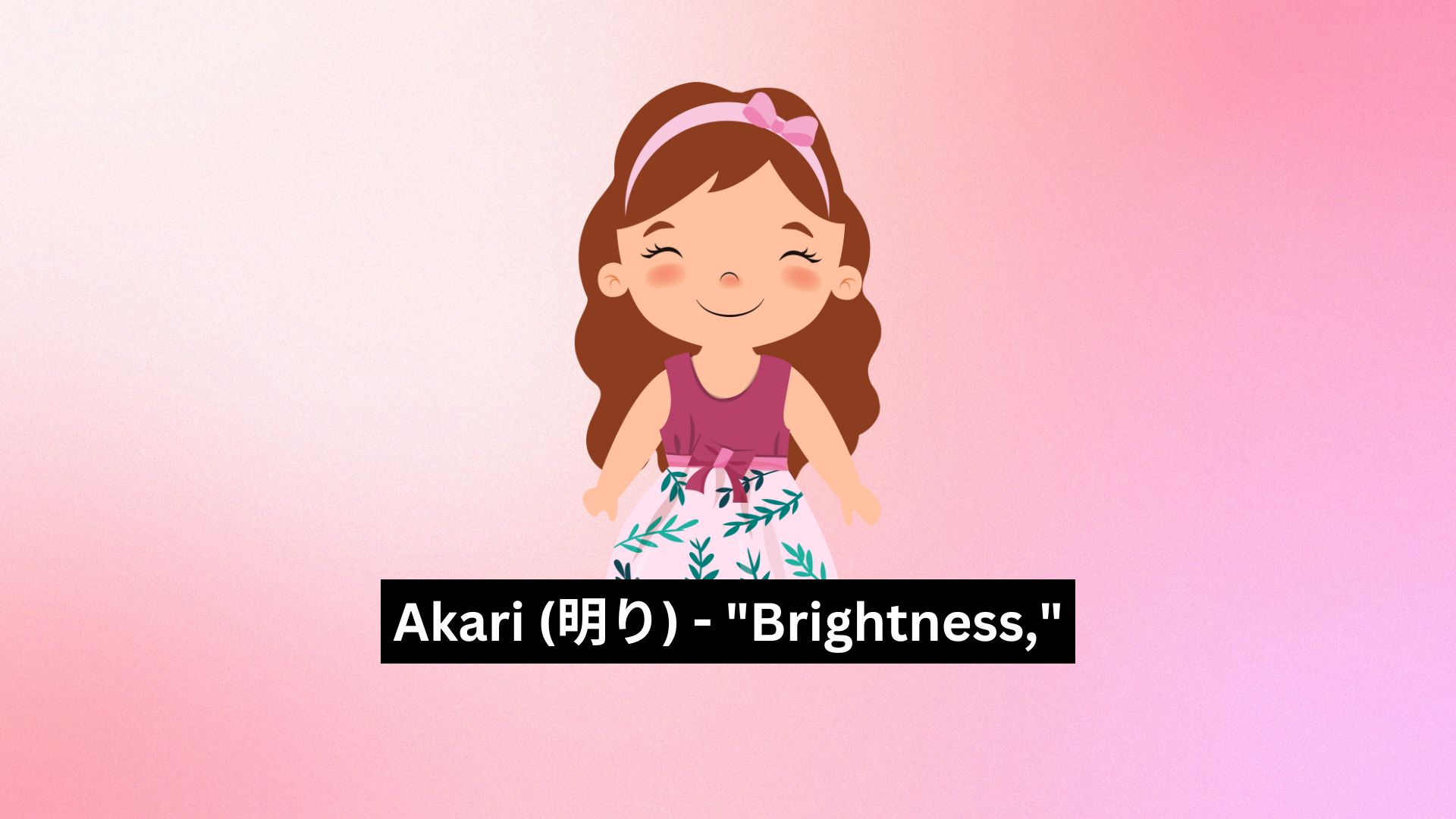
- Murasaki (紫) – “Purple,” occasionally used for lighter, pinkish hues, representing nobility and elegance.
- Himawari (向日葵) – “Sunflower,” but creatively connected to the rare pink sunflowers, symbolizing adoration and loyalty.
- Kurumi (胡桃) – Walnut, which blooms with pink flowers, signifying hidden potential and innocence.
- Asami (浅海) – “Shallow sea,” metaphorically linked to the soft pink of coral reefs, representing tranquility.
- Sakurami (桜美) – “Cherry blossom beauty,” directly referencing the aesthetic of pink blossoms.
- Botan (牡丹) – Peony, a flower that blooms in shades of deep pink, symbolizing prosperity and honor.
- Kurenai (紅) – “Deep red,” often associated with darker shades of pink, representing passion and intensity.
- Aiko (愛子) – “Child of love,” where love is metaphorically painted in universal pink, symbolizing affection.
- Tsubaki (椿) – Camellia, which blooms in both red and pink, symbolizing the divine and the sublime.
- Sumiko (純子) – “Pure child,” linking to the pure and innocent shades of light pink.
- Miyabi (雅) – “Elegance,” subtly tied to the refined and graceful shades of pink in traditional arts.
- Satsuki (皐月) – Named after the fifth month, often the time for pink azaleas to bloom, symbolizing happiness.
- Koharu (小春) – “Little spring,” evoking the fresh pink blossoms of early spring.
- Haruna (春菜) – “Spring vegetables,” creatively tied to the fresh pink hues seen in some spring blooms.
- Aya (彩) – “Color,” suitable for describing the vivid colors of pink that paint the natural world.
- Sakuragi (桜木) – “Cherry blossom tree,” focusing on the source of the iconic pink blossoms.
- Rinka (凛花) – “Dignified flower,” often depicted in art as pink, representing courage and self-respect.

- Natsumi (夏美) – “Beautiful summer,” connecting to the bright pinks seen in summer flowers.
- Momoa (桃亜) – “Peach Asia,” a unique twist on the typical associations with the pink of peach blossoms.
- Himari (陽葵) – “Sunflower sun,” with a creative link to the theme of rare pink sunflowers, representing warmth.
- Reika (麗花) – “Lovely flower,” with a direct connection to the loveliness of pink blossoms.
- Asuka (明日香) – “Fragrance of tomorrow,” suggesting the subtle and sweet scent of pink flowers.
- Harumi (春美) – “Spring beauty,” directly linking to the beautiful pink blooms of spring.
- Mao (真桜) – “True cherry blossom,” embodying the authenticity and charm of pink blossoms.
- Sayuri (小百合) – “Little lily,” often associated with pink lilies, symbolizing innocence and purity.
- Kaede (楓) – Maple, which can have pink leaves in spring, representing uniqueness and rarity.
- Shiori (栞) – “Bookmark,” metaphorically marking the moments of life with the soft hues of pink.
- Yuzuki (柚希) – “Citrus hope,” a unique name connecting the light pink shades of citrus blossoms to hope.
- Kanako (加奈子) – “Child of increase and Nara,” linking the growth and vibrancy of Nara’s pink plum blossoms.
- Azumi (安美) – “Safe beauty,” evoking the calm and soothing effect of soft pink shades.
- Chihiro (千尋) – “A thousand inquiries,” metaphorically exploring the depth of pink’s various shades.
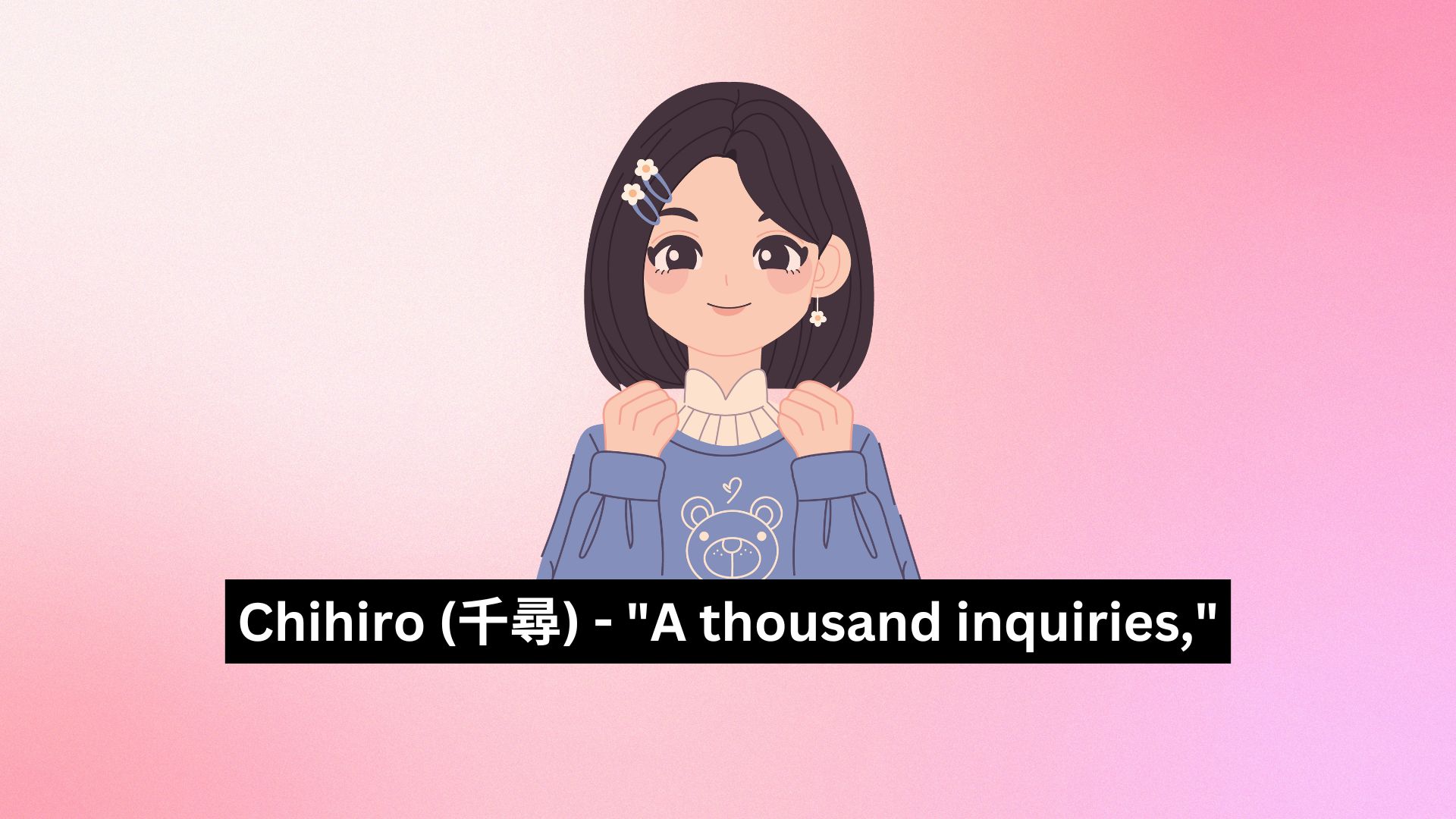
- Minori (実乃梨) – “Truth of pear,” an inventive connection to the light pink blush on some pears, symbolizing truth.
- Yukari (縁) – “Connection,” subtly referencing the interconnectedness of life, often celebrated with pink flowers.
- Nozomi (望美) – “Beautiful hope,” tying the beauty of pink to the eternal hope it represents.
- Haruka (遥) – “Distant,” evoking the far-reaching impact of the warm, inviting hues of pink.
- Midori (翠) – “Green,” but creatively linked to the pink seen in dawn skies, representing new beginnings.
- Rumi (留美) – “Stay beautiful,” symbolizing the enduring beauty of pink in nature and art.
- Sakiko (咲子) – “Blossoming child,” directly relating to the blossoming of pink flowers.
- Yuri (百合) – “Lily,” which can bloom in soft pinks, representing purity and renewal.
- Chiharu (千春) – “A thousand springs,” metaphorically representing the recurring beauty of pink each spring.
Also Read: 100+ Divine Japanese Names That Mean Angel
Popular Japanese Boy Names That Mean Pink
Let’s talk about some popular Japanese boy names that are inspired by the color pink. These names aren’t just about the color; they capture the beauty and warmth it represents.
Take ‘Asahi,’ which means morning sun. It brings to mind the soft pink of dawn. Then there’s ‘Haruto,’ meaning sun flying. Imagine the pink sky at sunset, that’s what this name is all about.
Finally, we have ‘Minato’ and ‘Tsubasa.’ ‘Minato’ means harbor, and ‘Tsubasa’ means wing. Both names evoke a sense of freedom and beauty, much like a vast, pink-streaked sky at dusk. These names do more than just sound nice. They connect with the beauty of the natural world and bring a sense of joy and inspiration.
- Momoiro (桃色) – Meaning “peach color,” reflecting the gentle and soothing hues of pink.
- Sakurairo (桜色) – Translates to “cherry blossom color,” capturing the iconic pink shades of cherry blossoms.
- Barairo (薔薇色) – Meaning “rose color,” associated with the deep pink of roses.
- Momoji (桃児) – Means “peach child,” connoting the freshness and vibrancy of pink.
- Ikuyo (育代) – A unique name meaning “generation of nurturing,” linking to the nurturing nature of the warm pink color.
- Kokoa (心桜) – Combines “heart” and “cherry blossom,” representing the heartwarming color of pink cherry blossoms.
- Fujiro (藤色) – Derived from Wisteria, which can have pink flowers, symbolizing grace and elegance.
- Asairo (浅色) – “light color,” often associated with soft pink shades.
- Haruiro (春色) – Meaning “spring color,” evoking the fresh pink colors of spring.
- Touiro (桃色) – Another variation for “peach color,” emphasizing the sweet and gentle aspects of pink.
- Sakuragi (桜木) – Means “cherry blossom tree,” directly linking to the pink blossoms.
- Beniiro (紅色) – Translates to “crimson color,” a deeper shade of pink with rich undertones.
- Sumireiro (菫色) – Refers to “violet color,” which can include pinkish hues, suggesting subtlety and depth.
- Nadeshiko (撫子) – Named after a pink flower, Dianthus, representing natural beauty and grace.
- Ayameiro (菖蒲色) – Derived from the color of iris flowers, which can be pink, symbolizing good news and messages.
- Hanairo (花色) – Meaning “flower color,” typically associated with the varied pinks in many flowers.
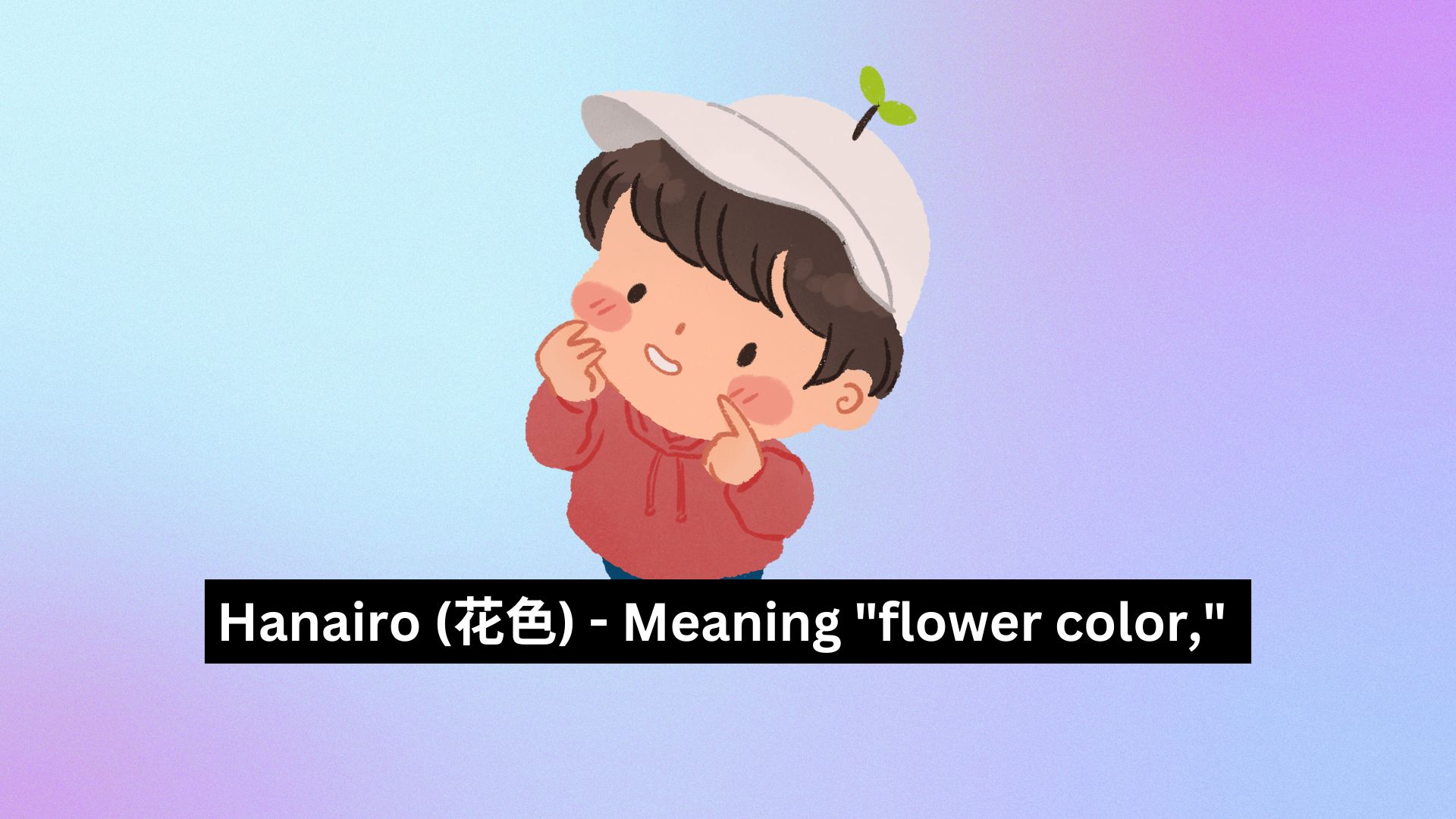
- Koubai (紅梅) – “red plum,” referring to the plum blossoms that are often a deep pink.
- Murasaki (紫) – Although primarily meaning “purple,” it can encompass lighter, pinkish tones, representing rarity and value.
- Botaniro (牡丹色) – Peony color, often a lush pink, symbolizing prosperity and honor.
- Umejiro (梅白) – Means “plum white,” but can refer to the light pink shades of plum blossoms, symbolizing purity and renewal.
- Kurumi (胡桃) – Walnut, which blooms with pink flowers, representing hidden strength and potential.
- Akaashi (赤石) – “Red stone,” often linked with pink minerals, symbolizing unbreakable and eternal bonds.
- Aka (赤) – Simply “red,” but can encompass shades of pink, signifying energy and passion.
- Sakuraba (桜葉) – “Cherry blossom leaf,” tied to the transient beauty of pink cherry blossoms.
- Ichigo (苺) – Strawberry, which is famously pink and sweet, representing delight and charm.
- Sumomo (李) – Plum, often depicted in a delightful pink, symbolizing perseverance and hope.
- Aoiro (葵色) – Historically, this can include lighter shades like pink, representing youthful energy and playfulness.
- Ran (蘭) – Orchid, which can bloom in pink, symbolizing love and refinement.
- Haruka (遥) – Meaning “distant,” but can imply a soft pink horizon at dawn, signifying new beginnings.
- Sora (空) – Sky, which can turn a soft pink at sunrise or sunset, symbolizing infinite possibilities.
- Kohana (小花) – “Small flower,” often depicted in pink, representing delicate beauty.
- Sakurao (桜男) – “Cherry blossom man,” a poetic name linking directly to pink blossoms.
- Tsubaki (椿) – Camellia, which can have pink blooms, symbolizing the divine.
- Hanao (花男) – “Flower man,” directly associated with the beauty of pink flowers.
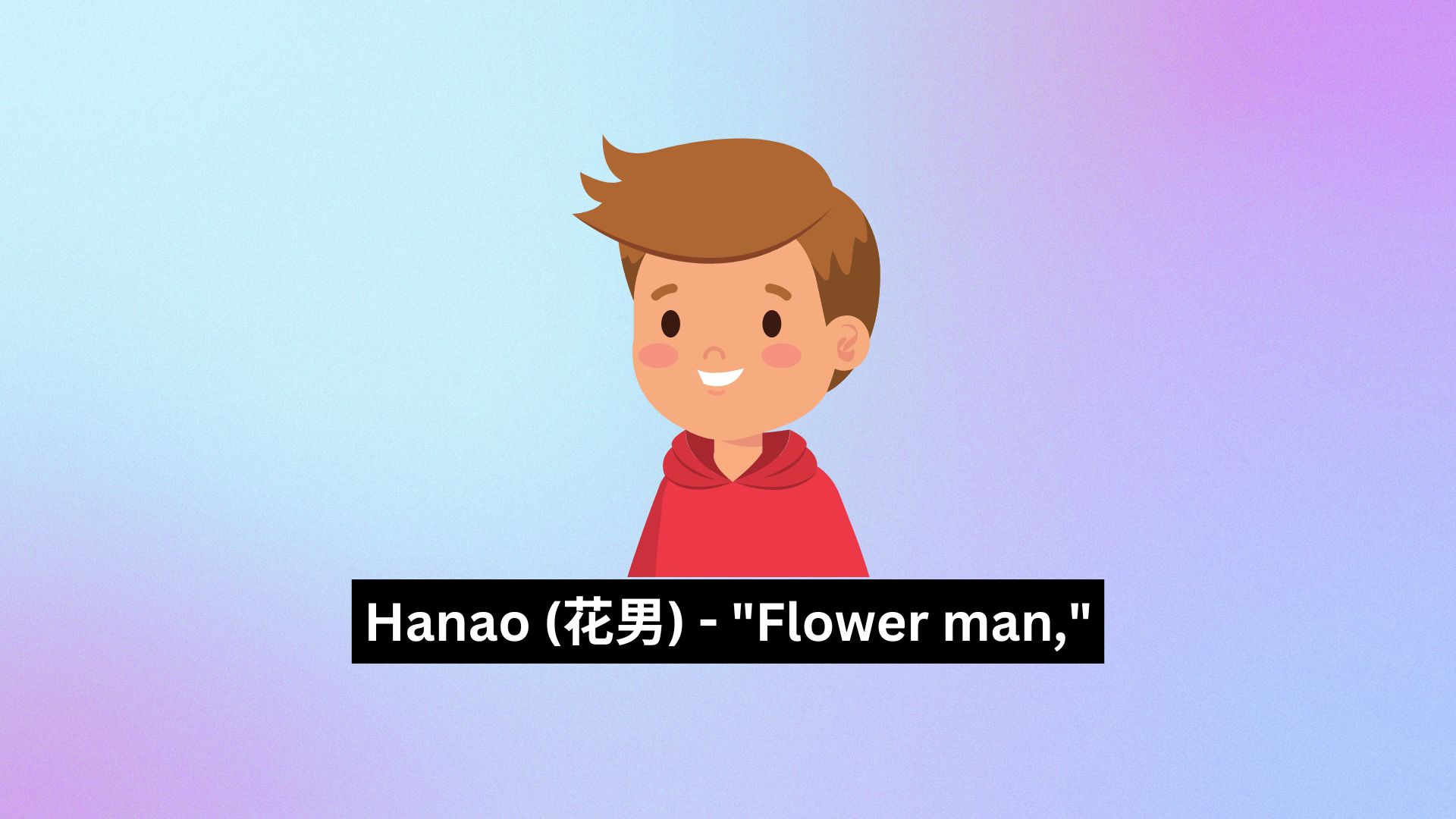
- Masuo (桝男) – A unique name that can suggest a box (桝) of pink cherry blossoms.
- Kurena (紅菜) – “red vegetable,” but can imply a garden of edible pink blossoms, symbolizing nourishment and growth.
- Manato (愛人) – “Dear person,” evoking the warmth and affection associated with pink.
- Akatsuki (暁) – Dawn, often painted in pink hues, representing renewal and hope.
- Shinku (真紅) – “True crimson,” a deeper pink signifying deep affection and loyalty.
- Mao (真桜) – “True cherry blossom,” embodying the essence of pink cherry blossoms.
- Kosumosu (コスモス) – Cosmos, a flower that blooms in vivid pinks, symbolizing order and beauty.
- Akane (茜) – Madder, a plant that can dye things pink, symbolizing transformation and impact.
- Sakuraichi (桜一) – “The best cherry blossom,” emphasizing the peak beauty of pink blossoms.
- Renjiro (恋次郎) – “Love’s second son,” where love is often depicted in pink, symbolizing romance and passion.
- Haruto (晴人) – “Sunny person,” indirectly related to the cheerful and bright nature of pink.
- Murasakino (紫野) – “Purple field,” but can imply fields of light pink flowers, representing dreams and creativity.
- Rindou (竜胆) – Gentian, a flower that occasionally blooms in pink, symbolizing resilience and strength.
- Akaishi (赤石) – “Red stone,” commonly associated with pinkish-red stones, symbolizing enduring beauty.
- Benimaru (紅丸) – “Red circle,” often used to describe the red sun, but can imply the warmth of pink, symbolizing life and vitality.
- Momotose (桃年) – “Peach year,” implying a year full of the growth and sweetness represented by pink.
- Sakurato (桜人) – “Cherry blossom person,” linking directly to the life and vibrancy of pink cherry blossoms.
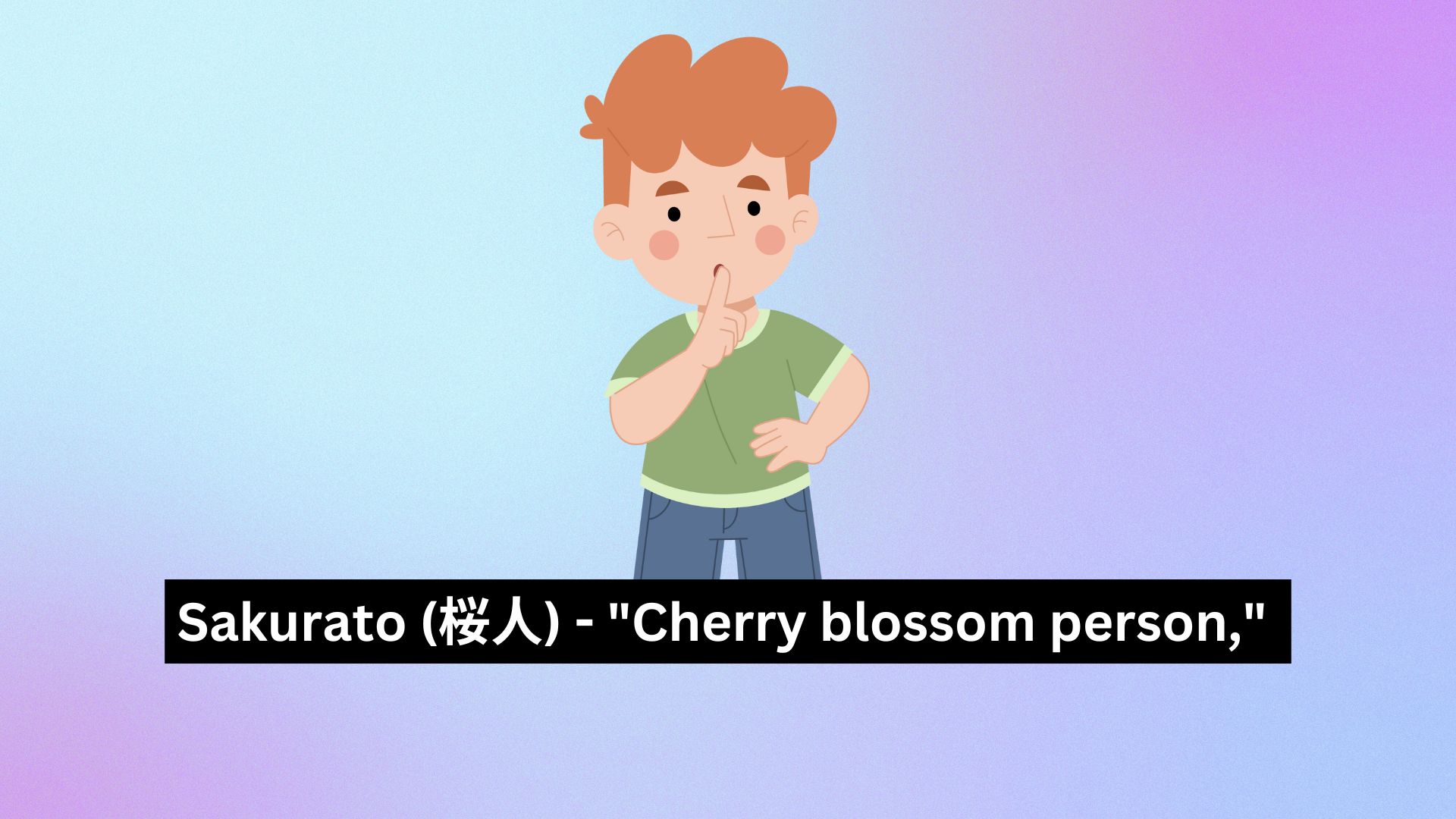
- Sumika (住香) – “Living fragrance,” which can be associated with the sweet scent of pink flowers, symbolizing a pleasant and inviting personality.
- Kosumoa (コスモア) – A stylized form of Cosmos, further emphasizing the beauty and harmony of pink.
- Kurei (紅麗) – “Beautiful crimson,” highlighting the elegance and deep appeal of pink.
- Momoaki (桃明) – “Bright peach,” symbolizing brightness and positivity associated with pink.
- Sakurako (桜子) – “Child of cherry blossoms,” traditionally a feminine name but can be masculine, emphasizing the beauty of pink.
- Murasakibara (紫原) – “Purple field,” where purple can encompass pink, symbolizing a vast and dreamy landscape.
- Akahiko (赤彦) – “Red boy,” where red includes shades of pink, representing energy and vitality.
- Hanaki (花希) – “Flower hope,” where flowers often are pink, symbolizing hope and aspirations.
- Benio (紅夫) – “Crimson husband,” where crimson can reflect deep pink, symbolizing a deep and passionate nature.
Unisex Japanese Names that Mean Pink
This list features unisex Japanese names that embody the beauty and essence of pink. Each name has a unique meaning and connection to the color pink, often symbolizing qualities such as gentleness, beauty, elegance, and renewal. Perfect for anyone seeking a name that reflects the soft and vibrant hues of pink, these names capture the delicate charm and cultural significance associated with this lovely color.
- Aoi (葵) – Meaning: Hollyhock. Though hollyhocks come in various colors, the pink variety is quite popular, symbolizing elegance and gentleness.
- Ume (梅) – Meaning: Plum Blossom. The pink plum blossoms are a sign of the arrival of spring, representing renewal and hope.
- Aya (彩) – Meaning: Color. Can refer to the spectrum of colors, including pink, representing vibrancy and life.
- Rin (凛) – Meaning: Dignified. Often associated with cherry blossoms, reflecting the dignified beauty of pink flowers.
- Nadeshiko (撫子) – Meaning: Fringed Pink (Flower). Refers to a specific type of pink flower, symbolizing grace and femininity.
- Shion (紫苑) – Meaning: Aster (Flower). While asters can be purple, the name also brings to mind the soft, pink shades seen in various flowers.
- Haru (春) – Meaning: Spring. Spring is closely associated with cherry blossoms and other pink flowers, symbolizing renewal and warmth.

- Momo (桃) – Meaning: Peach. The pink peach blossoms are symbolic of youth and immortality.
- Ichigo (苺) – Meaning: Strawberry. Represents the pink hue of strawberries, associated with sweetness and freshness.
- Sumire (菫) – Meaning: Violet. Although primarily violet, it can also evoke light pink shades, symbolizing modesty and charm.
- Koharu (小春) – Meaning: Little Spring. Implies the blooming of pink flowers during the spring season.
- Kaede (楓) – Meaning: Maple. While maples are known for their red leaves, the delicate pink hues in spring maple leaves symbolize transition and beauty.
- Mizuki (瑞希) – Meaning: Auspicious Hope. Though not directly meaning pink, it carries the softness and promise often associated with pink tones.
- Akari (朱莉) – Meaning: Red Jasmine. Red jasmine can also hint at the soft pink shades, representing delicacy and elegance.
- Tsubaki (椿) – Meaning: Camellia. While camellias come in various colors, pink camellias symbolize longing and passion.
- Yume (夢) – Meaning: Dream. Dreams often evoke gentle, pastel shades, including pink, symbolizing imagination and tranquility.
Conclusion
Looking at Japanese names related to the color pink really shows us how much nature and beauty matter in Japanese culture. These names aren’t just about looks; they carry deep meanings that reflect the values of society. When we study these names, it’s like getting a sneak peek into how nature and the fleeting moments of beauty influence both personal and cultural identities. It’s quite fascinating how everyday life and language can be so deeply intertwined with these elements. Keep visiting The Jeep Diva for more such articles.

Sara Sabrena is an experienced content writer and a passionate movie fan. She loves analyzing movies and writes engaging reviews and in-depth analyses of films, from independent ones to big blockbusters. With her background in literature and media studies, Sara adds depth and her own unique viewpoint to her writing.

